Spotlight on Jessie Wardarski
Dec 11, 2017
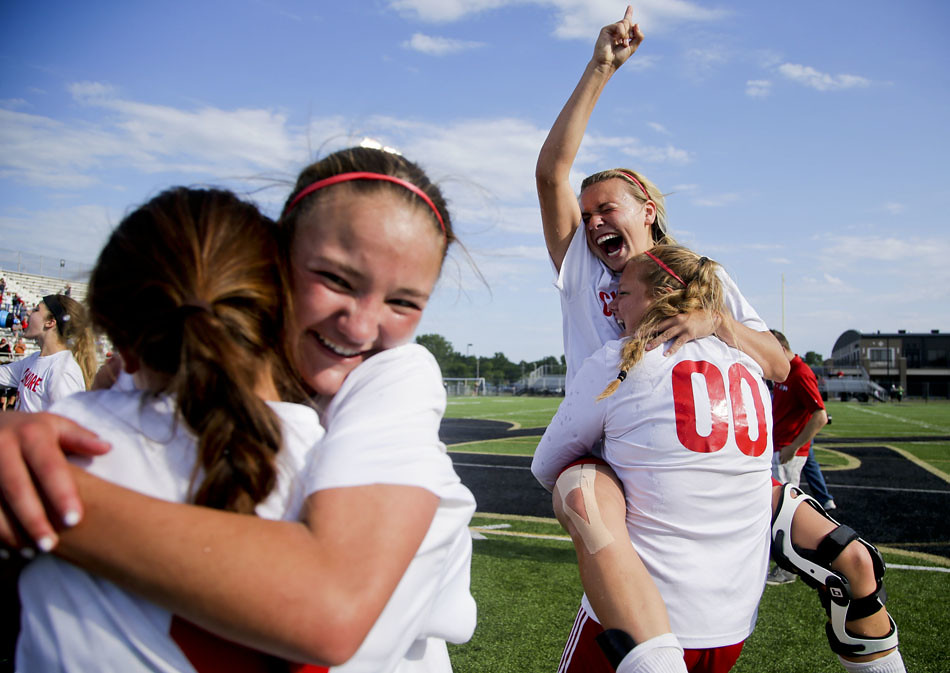
TID:
This is a lovely moment, Jessie. Can you tell us some of the backstory?
JESSIE:
Thanks Ross. This photo came out of a high school 5A girls state soccer game. I was new to Tulsa at the time and didn’t know much about either team, but before the game I overheard a few reporters talking about how it had been quite some time since the Claremore Zebras (who are pictured) had won a state championship. So naturally a lot was on the line for them. The two teams played pretty physical for a lot of the game and the score was close for most of the game. But, in the end, the Zebras came out on top.
I think the game started at about 2 pm, so by the time the game ended the sun was finally getting lower, but the sky was just blue enough still to give a great backdrop for the photo. I remember standing next to the Zebras bench on the sidelines as the final goal was scored and the team rushed the field immediately. Players on the field were already hugging and cheering and I just remember sprinting to the celebration alongside the team. The adrenalin high was pretty contagious.
Some were crying. Some were screaming. You could really feel the emotion in these players and it was hard not to feel the excitement, too. It had clearly been building up the whole season and they just left it all out there on the field.
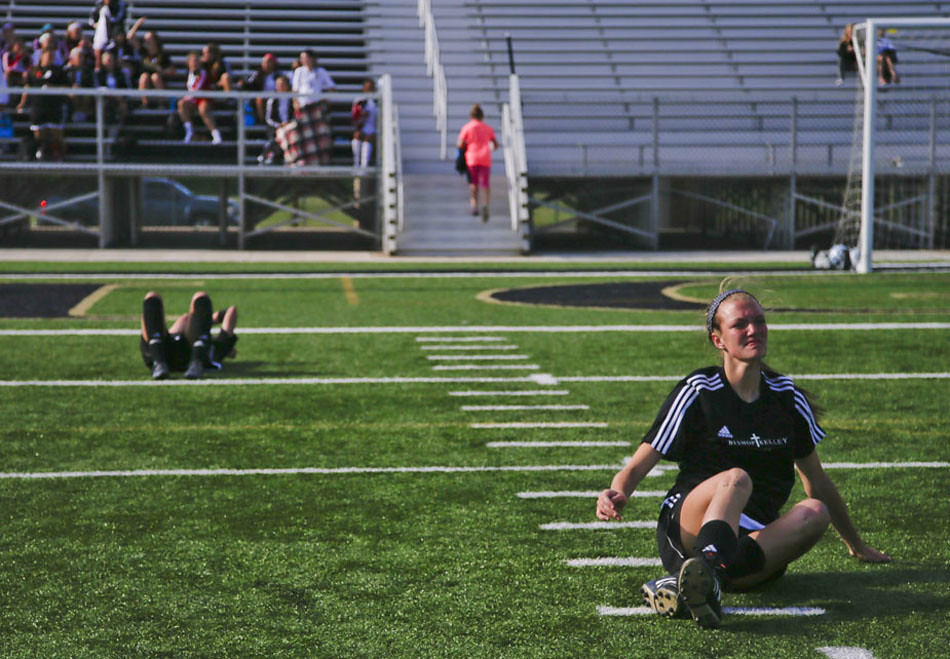
TID:
I love the access of high school sports, and the ability to get closer to those participating in them. Can you talk about the culture of coverage in Tulsa, and how you approach not just games like this, but high school sports in general?
JESSIE:
I’m right there with you Ross. The access you have with high school sports specifically lends itself to great story telling, and intimate photos, which of course is ideal for this job and what we’re trying to accomplish. It really allows you to capture those vulnerable, emotional, raw moments that are so often guarded in both college and professional sports. I’m not a sports photographer by any means, and it’s not something I'm always comfortable doing, but I love shooting high school sports for this very reason. The pictures before and after the game and the candid features on the sidelines or in the locker rooms. And in and around Tulsa, you really get a range of passions. Sports, especially high school, are huge for most communities here.
There are certain sports in Tulsa that we cover more heavily: football, basketball and baseball. So, sports like soccer we really only cover during playoffs or state tournaments. So this was actually my first interaction with these teams all season. We of course try to give equal coverage, but a lot of the time there are certain schools or certain sports that just attract a larger audience, which drives traffic and drives some of our main coverage. But, no matter the sport, I try to go into most high school athletic situations the same. Knowing that, yes, action is important (if I could I’d go to games just to shoot features), but I need to be watching and waiting for those moments of high impact or high emotion as well.

I’ve covered enough high school games that I can, usually, map out before hand the sort of shots I’ll be able to get. Emphasis on the usually, haha. However, I like to go into these situations with a sort of spontaneity as well. If I see something happening up in the stands with fans that’s interesting I might skip half a quarter of action and shoot what’s going on there instead. Getting a feel for not only the game, but really the environment. This is something that the Tulsa World is really moving towards in regards to high school sports. Capturing the entire scene, the environment. Documenting life around high school and high school sports.
TID:
Moments like this are fleeting. Knowing this, how did you prepare mentally to be ready?
JESSIE:
When you cover sports I think these scenarios and the outcomes are always in the back of your mind. Guessing how it will actually play out is always a gamble in my opinion, unless the score and the direction of the game is obvious. I honestly didn't know much about either team at the time, aside from talk I picked up on the sidelines just minutes before. And I didn’t exactly know the rules or etiquette of high school sports in this state. So I decided I’d go all out, get as close as possible as quick as possible. And that’s typically the approach I take with high school sports.
It was a back and forth game, but as the end got closer I had a hunch the Zebras were going to take it. Soccer is one of my favorite sports to watch, so I knew that typically the team is coming from all positions on a large field and they’re going to surround either whoever scores that last goal, or the goalie if they block that last kick. But, you can usually follow the bench to the action. So, I was waiting anxiously, camera pointing at the bench for immediate reactions while still keeping an eye on the field, ditched the long lens, and from there played the waiting game.
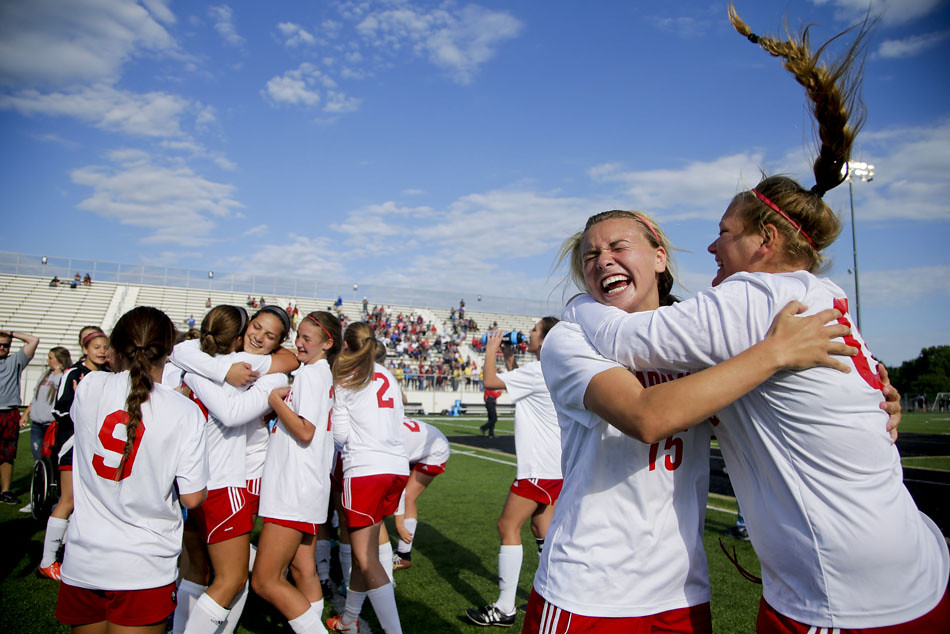
TID:
It’s always a toss up between shooting these moments with a wide angle and a longer lens. Why did you chose the route of a wide angle?
JESSIE:
This might sound silly, but as a photographer I tend to get really lost in that emotion and in intense moments I guess. The excitement and intensity just spreads so quickly, it’s infectious, really. It’s that one time you really feel a high as a shooter I think, if that makes sense. So with that being said, I’ll always default to a wide angle if I can and if the sport allows. Obviously for something like hockey you can’t really do that, but I think with something like soccer you really have to take advantage of it. Being right there, up close, seeing and hearing all of the emotion really helps me shoot. Well, usually.
Sometimes I get a little too wrapped up in it and miss some really great moments that might be happening on the other side of the group. But I guess that’s also the risk you take when you pick the wide angle. In my opinion, being up close gives you’re images a real quality. You catch those tears rolling down a cheek or the sweat beaded up on someones forehead. Sometimes even that hair flying into your frame that makes the image that much more dynamic.
TID:
Does shooting sports help you in other aspects of your daily photography (in terms of anticipation, predictive behavior, etc.?) In other words, what about shooting sports translates to other assignments?
JESSIE:
This is a great question, and I don’t think I’ve ever really thought about it before. I would say it has helped give me the confidence to get up close and personal with people. I use to be really timid about even standing next to players on the sidelines, didn’t want to be a distraction them during the game, but that’s something I’ve really learned to get over on and off the field. You’re there to capture the moment, to document the people and the place, no matter what you’re covering. And you’re not going to get the shot if you’re timid, or worried about what other people are thinking of you, and the fact that you’re standing next to them with a camera. They’ll get over it and so will you.
In terms of anticipation and predicting behavior, it has helped in that you learn to read people, read their faces. You can start to sense, or anticipate, when somebody might embrace another person, or may start crying. It teaches you to know what lens you need to have in your hand at the right moment. But, I think overall, it really helps and teaches you to stay observant and on your toes as a photographer in general. So I’d say that, yes, sports definitely trains you to have these quick observant qualities and, yes, it translates into almost every realm of photography.
TID:
What have you learned about yourself in covering sports on this level?
JESSIE:
I’ve definitely learned a lot. But I think the biggest thing is that I get swept up in a moment and in emotion. I’ve learned how to manage myself in those emotional situations. I’ve often felt like I was out there celebrating with the team, but you have to stay objective and focused in order to see the whole situation and catch the whole moment. I’ve also learned that I’m a photographer who likes to blend in, and with that I didn’t talk a whole lot, which is good and bad. But with sports, I learned I need to be able to be both bold and quiet. In a lot of situations, you need to ask questions to get the access that allow you to get the shots you want. If you don’t ask you won’t know, obviously.
So, something as simple as asking a coach before the game if you can come in the locker room at halftime, or if you can get on the roof of the press box to get an overall shot, or "hey coach can I ride the bus with your team to the game to really get the feel of the team," etc.
TID:
Where there aspects of covering it that surprised you? Additionally, what problems did you encounter and how did you problem solve for them?
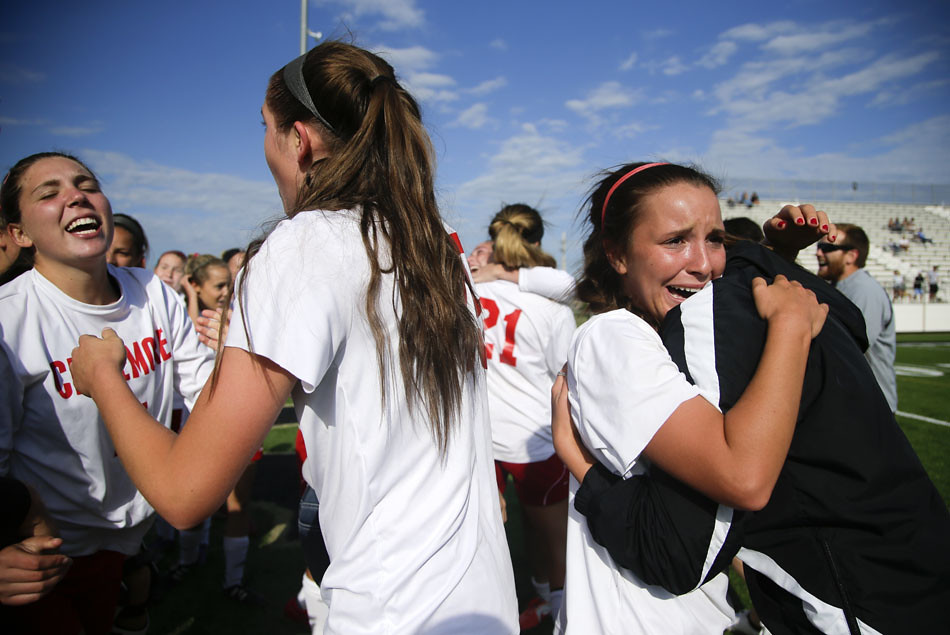
JESSIE:
I think what surprised me most was getting this shot, haha. You never really know what you’ll get, you hope for lots of emotion and excitement, but sometimes teams bottle it up until the locker room or until the coach talks to them after the game. So having this sort of excitement was a happy surprise.
A problem I ran into was trying to balance my time and photograph the other team as they consoled each other. You want to be sensitive and you have to remember they played well and respect them and their emotions. I don’t think that’s really something you solve, it’s just having it in mind and remembering how you’d like it to be captured if you were in their shoes. That’s also sometimes my downfall personally. Thinking too much about what they might think of me shooting them crying or hugging, etc. But it’s something as a photographer you have to work through and be okay with. It takes time though I’ve learned to be comfortable with that.
TID:
What have you learned about others (coaches, parents, participants, etc.)?
JESSIE:
I’ve learned that all coaches are different. All players react different. PEOPLE ARE DIFFERENT. And with that you have to be able to take anticipate any sort of response. For instance, some coaches are okay with you being between their players on the sidelines during a game. Some will yell at you probably in hopes of you getting kicked off the field. You have to be able to take that response though and know they are in the moment and in the sport. Coaches are a lot like parents, protective, encouraging and they just want what’s best for their players and students. So again I’ve learned you just have to get their early and ask and respect what they have to say. But also that you have to do your job and sometimes that might mean making somebody mad.
Last spring, I was covering a local baseball team in the playoffs. They lost and so it was my job to shoot that, to cover the loss and document the team. I really hated shooting players crying and it makes me uncomfortable to have to do that when I know what they’re feeling, we all do. A player looked up at me and asked if I really needed to shoot a picture of him crying. In my head I said no and I wish I wasn’t, but out loud I knew it was my job and that’s all I said.
TID:
Now, onto the moment. Can you talk about the main image, and the moments leading up to it?
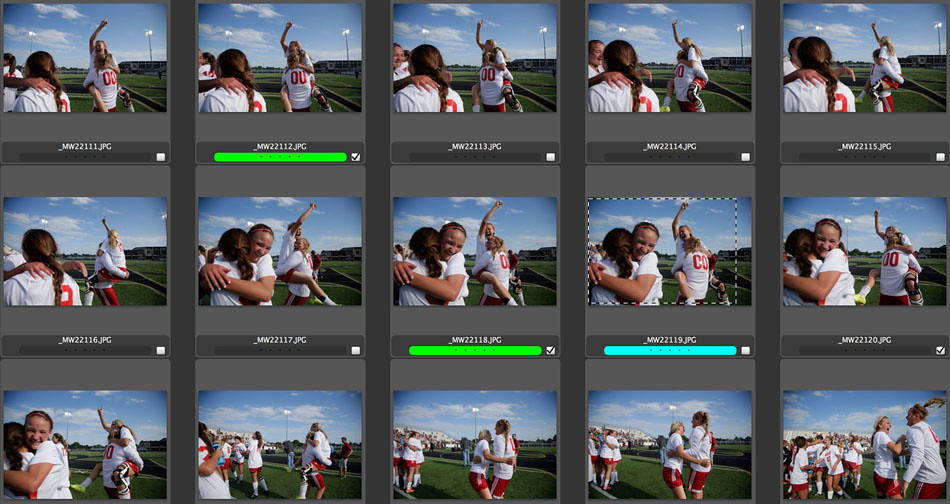
JESSIE:
So like I said earlier, this team was “the underdog” essentially. They had high expectations for themselves, for the game. The Zebras wanted the win. I remember the team running onto the field, exhilarated. I followed, shooting everything and anything really. Girls hugged and cried. It all happened so fast. The girl who is on the right side holding her finger up in the air I could tell was a senior, she had been hugging players earlier, but I saw her moving towards the girl holding her up and I started shooting immediately. So essentially I have their initial embrace and they just kept hugging and spinning and I just kept shooting.
I think from there luck really kicked in. The other girls hugging swayed into the frame. The main girls’ expression only got bigger with every spin they did and the clouds and sky couldn’t have been better. It was all a perfect, lucky, storm I think.
TID:
In conclusion, what advice do you have for photographers who want to capture moments like this?
JESSIE:
I think the biggest piece of advice I could give anyone is to just be there. To be there and to stay hungry for good photos that document life. Don’t be afraid to get a little lost in the moment. And finally, take advantage of the openness and rawness of high school sports because access only gets tighter from there on up.
Thanks for asking my opinion Ross, it’s made me really analyze and reflect how and why I shoot the way I do. And thank you for letting me share my thoughts on the whole process.
:::BIO:::

I'm a current staff photojournalist with the Tulsa World. I'm a 2015 graduate of the Walter Cronkite School of Journalism and Mass Communication at Arizona State University where I earned a B.A. in Journalism and Mass communications along with certificate in international studies. I was previously a photo intern at the Arizona Republic, a multimedia intern at the Cedar Rapids Gazette and a News21 Fellow. My life goals include: traveling to all 50 states, working in countries across the globe, running at least 10 marathons, and finally, to start a video/documentary company.
You can see more of her work here: www.jkwardarski.com